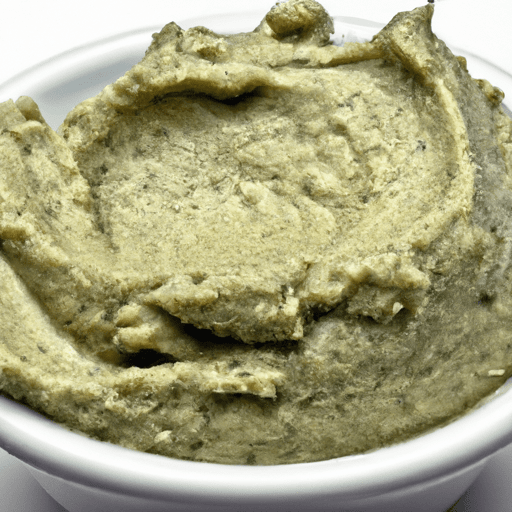Anchovy Paste: A Secret Ingredient for Flavorful Delights
Anchovy paste, an essential ingredient in many cuisines around the world, is a concentrated form of umami. Made from finely ground anchovies, this salty paste carries an intense flavor that can effortlessly enhance a wide range of dishes. In this blog post, we will explore the taste, common uses, nutritional value, and delve into some interesting facts and history about this culinary gem.
The Taste of Anchovy Paste
Anchovy paste possesses a robust and savory taste that adds depth and complexity to dishes. While some may be put off by the thought of using anchovies due to their overpowering aroma, anchovy paste lends a milder flavor that blends seamlessly into various recipes. It delivers a rich umami kick, with hints of saltiness, and a subtle fishy undertone that enhances the overall taste profile.
Common Uses in Cooking
Anchovy paste demonstrates its versatility by complementing both meat-based and vegetarian dishes. Here are a few popular uses for anchovy paste in the culinary world:
- Italian Cuisine: Anchovy paste is a pivotal ingredient in traditional Italian recipes such as Caesar salad dressing, pasta alla puttanesca, and bagna cauda (a warm dip made with garlic, butter, olive oil, and anchovies).
- Asian Cuisine: It is frequently utilized in a myriad of Asian dishes such as stir-fries, dipping sauces, and soups, adding a savory depth to the overall flavor.
- Marinades and Rubs: Incorporating anchovy paste into marinades or rubs for meats, such as steak or lamb, infuses a pleasant umami flavor that elevates the dish to new heights.
- Enhancing Sauces: Adding a small amount of anchovy paste to tomato-based sauces or gravies helps intensify their flavors, creating a more complex taste experience.
As a general rule of thumb, a little bit of anchovy paste can go a long way, so it’s essential to use it sparingly until you find the balance that suits your taste buds.
Nutritional Value and Health Benefits
Anchovy paste may be small in size but packs a nutritional punch. Here are a few key benefits worth noting:
- Omega-3 Fatty Acids: Anchovy paste is an excellent source of heart-healthy omega-3 fatty acids, which are essential for brain function and reducing inflammation in the body.
- Protein: Anchovy paste contains a significant amount of high-quality protein, making it a valuable addition to the diet, especially for those following a vegetarian or low-meat diet.
- Vitamins and Minerals: Anchovy paste is rich in calcium, iron, magnesium, and vitamin D, contributing to bone health and overall well-being.
While anchovy paste offers several nutritional advantages, it is essential to be mindful of sodium levels, especially for individuals with specific dietary restrictions or high blood pressure. Moderation is key.
History and Fascinating Facts
Anchovy paste has a long-standing history dating back thousands of years. Here are a few fascinating facts for you:
- Ancient Roman Delicacy: Ancient Romans prized garum, a fermented fish sauce similar to anchovy paste, as a culinary treasure. It was highly sought after and used extensively in their cuisine.
- A Secret Ingredient: Chefs worldwide swear by anchovy paste as their secret weapon for enhancing the flavors of countless dishes, as it lends a unique umami taste without overpowering other ingredients.
- Easy Storage and Convenience: Anchovy paste is a convenient alternative to whole anchovies. Stored in tubes or small jars, it has a longer shelf life and doesn’t require refrigeration, making it a handy addition to any pantry.
Next time you’re seeking that extra oomph in your dishes, consider reaching for a tube of anchovy paste and unlocking a world of flavor possibilities.
In conclusion, anchovy paste is a culinary powerhouse that introduces an explosion of umami in various recipes. Whether you’re a fan of Italian cuisine, want to add depth to your Asian dishes, or simply wish to elevate your sauces and marinades, this versatile ingredient has got you covered. Embrace the intense flavor, savor its nutritional benefits, and dive into its fascinating history - anchovy paste is here to revolutionize your culinary endeavors.
Interesting facts about Anchovy Paste:
Origin: Anchovy paste is made from anchovies, which are small, oily fish found in the Mediterranean Sea and the coastal areas of the Atlantic Ocean. They have been popular in Mediterranean cuisines for thousands of years.
Common Uses: Anchovy paste is commonly used as a flavoring ingredient in various dishes, adding a salty, umami-rich taste. It is commonly used in Caesar salad dressing, pasta sauces, stews, dips, and marinades. It can also be spread on bread or crackers for a savory snack.
Nutritional Benefits: Anchovy paste provides several nutritional benefits. It is high in protein, omega-3 fatty acids, and vitamin B-12. Omega-3 fatty acids are important for heart health, while vitamin B-12 is essential for the proper functioning of the nervous system and the production of red blood cells.
Unique Properties: Anchovy paste has a strong and distinctive flavor due to the natural umami compounds present in anchovies. It adds depth and complexity to dishes. Additionally, its dense consistency makes it easy to incorporate in various recipes.
Historical Significance: Anchovies have a rich historical significance. They were highly valued by the ancient Romans and Greeks and were frequently used in their cuisine. The Roman condiment garum, made from fermented fish, was derived from anchovies and was a staple in Roman cooking. Anchovies have continued to play a significant role in Mediterranean and European cuisines throughout history.




Use the share button below if you liked it.
It makes me smile, when I see it.